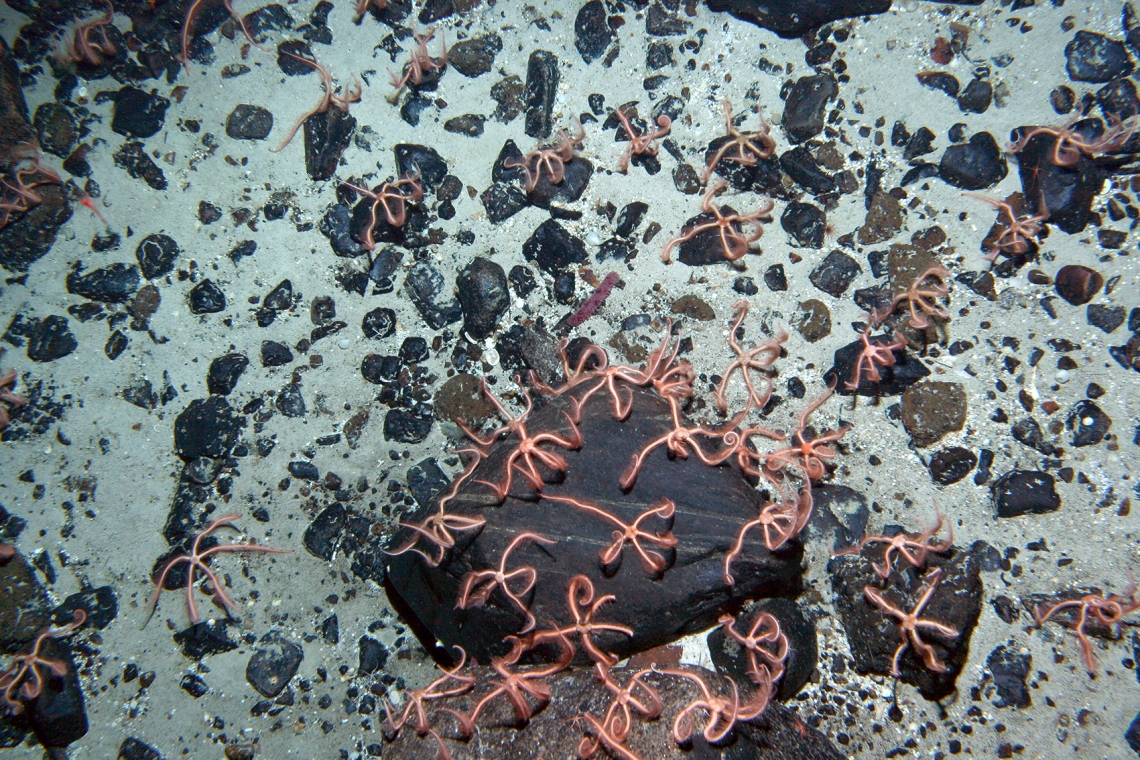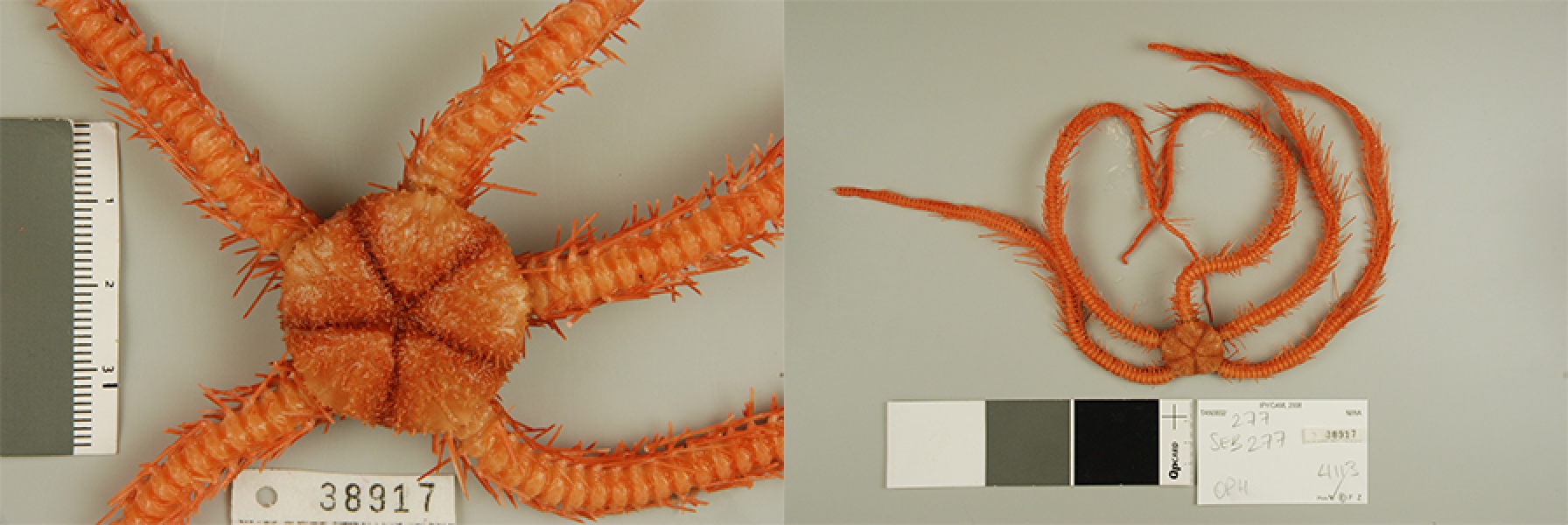This long spiny-armed brittle star is named Ophiocamax gigas Koehler, 1900, and was collected from 700 m deep on the Admiralty Seamount, just north of the Ross Sea, Antarctica in 2008.
This species belongs to the Ophiacanthidae family, which are characterized by their spiny disc plates and arms. ‘Acantha’ means thorn in greek, hence the choice of family name. There are 12 current species in the family, with the gigas species occurring exclusively around Antarctica, south of the Antarctic Convergence from 675-1954 m.
You may have heard of Brittle Star City before? A huge aggregation of the closely related species, Ophiacantha otagoensis, was found south of New Zealand on the Macquarie Ridge chain of Seamounts in 2008. Earlier that same year we sighted a “Brittle Star Village” in Antarctica on the flanks of the Admiralty Seamount.
Echinoderms, the group that brittle stars belong to, form aggregations such as this for a number of reasons; such as for breeding to give their gametes a better chance at meeting, to protect themselves from predation by grouping en masse, or for feeding in areas where the currents and food supply is most suitable. This latter example is what we think might be happening here in “Brittle Star Village”, with densities of 4-8 Ophiocamax gigas individuals per square metre (Bowden et al., 2001), and the arms of the animals are observed to be outstretched and ‘waving’ in the current to suspension feed.
We observed Ophiocamax gigas on any available hard surface, pebble or boulder, presumably to gain some height up off the seafloor to take advantage of any food floating past in the very cold Antarctic shelf currents swirling around Admiralty Seamount.
We mentioned another aggregation of echinoderms on Admiralty Seamount in our earlier Critter of the Week, the fields of archaic sea lilies. The theory about why the brittle stars might be there in such large numbers is similarly that the isolated location of the Admiralty Seamount provides refuge from the usual pressures of predation (Bowden et al., 2001). The Echinoblog gives an example of when apparently gentle suspected suspension feeding brittle star aggregations turn nasty...
Finally you can read about another echinoderm group, sand dollar urchins, which form aggregations to feed in this blogpost from the Bamfield Marine Sciences Centre in British Columbia. The blogpost describes some research showing that sand dollars can change their feeding mode as the density of individuals in the aggregation goes up. When there aren't many other urchins around they will deposit feed on the surrounding sediment, but when there are lots of them they will switch to suspension feeding! Very cool! There is also has a very nice looking sand dollar cookie recipe at the end of the blog.



